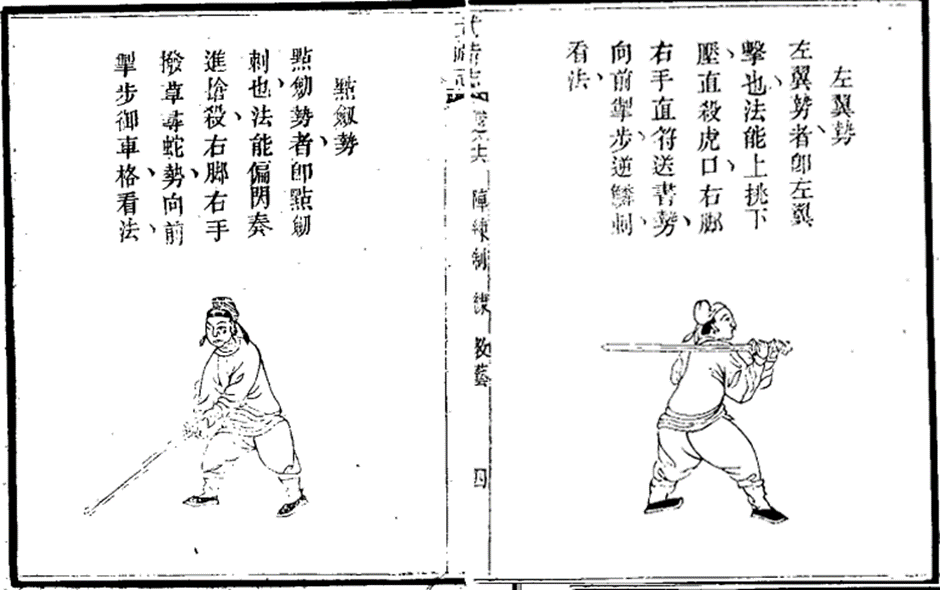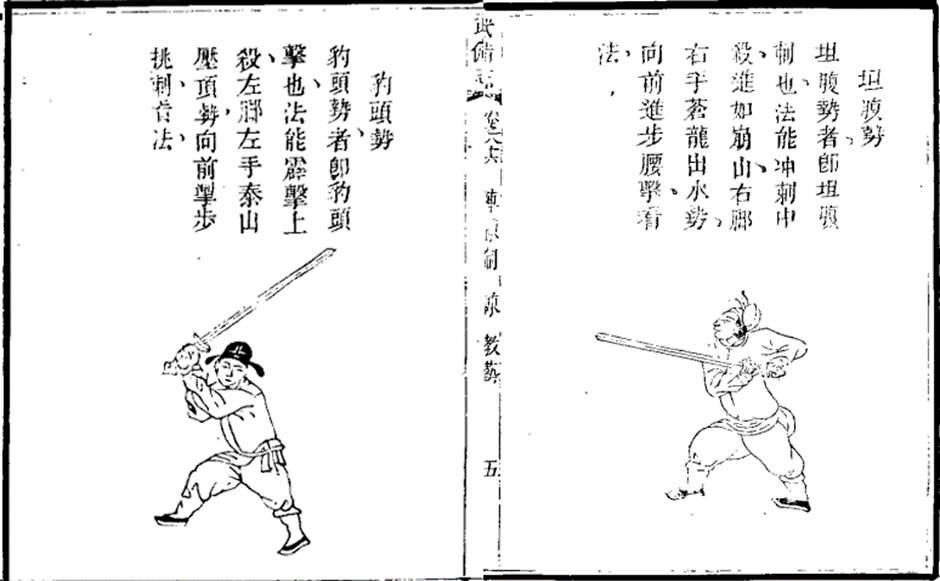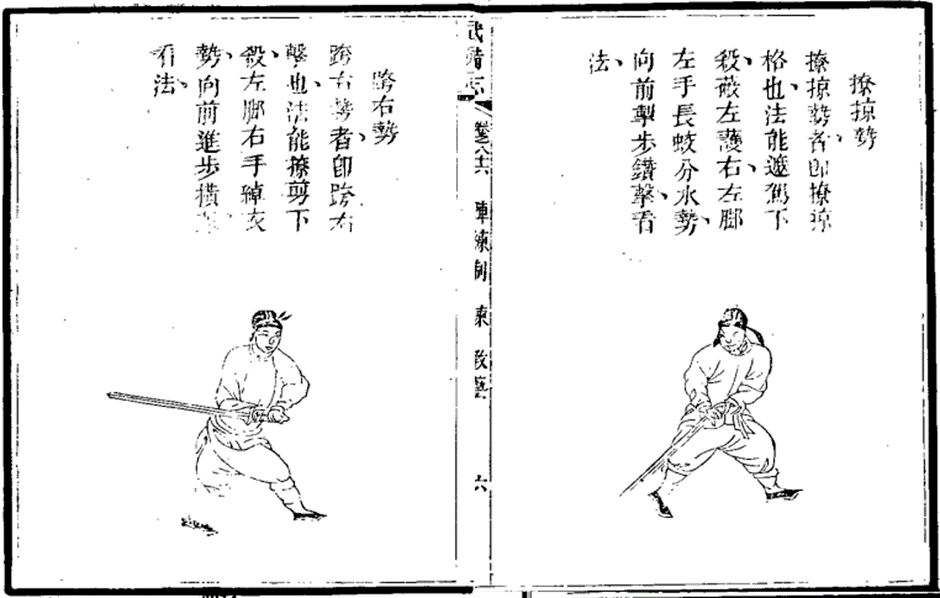《劍》
Jian
Chinese Long Straight Sword

武備志 (Wu Bei Zhi) "Military Preparation Manual" is an ancient Chinese military book written in 1621 by Mao Yuan-Yi, a Ming Dynasty military officer. This is the biggest book in Chinese history on military topics, and inside it is a chapter on swordsmanship with a 2-handed Long Straight Sword.
It consists of 24 stances with a 2 handed double-edged straight sword. Each stance is a technique itself which is described by its accompanying text.
In order to translate & interpret the stances, I've not only used my own martial arts background & experience, but I've also triangulated information from other manuals as well. On the left is a preview of the English translation book. You may click on the images to enlarge.
Every single line of text is translated individually, so that I'm forced to work on every single word. This prevents me from skipping over difficult words, and helps to ensure that the translation is as precise and complete as possible.
This English translation book is printed & distributed by Lulu.com in the US, so if you live in the US itself or in western countries, you can expect to enjoy very cheap shipping. Be sure to check out the front page of Lulu.com for promo codes to get yourself a discount!
Contents (A5 size, 154 pages):
-
The Straight Sword (Introduction)
-
Sword Song
-
Korean Techniques
-
24 Stances of the Long Straight Sword
-
Linking Up The Stances
-
Historical Manuals References
-
How To Practice
Features to help you learn & understand:
-
Hanyu Pinyin pronunciation for all Chinese text
To help you pronounce the stances' names accurately. -
Chinese text side-by-side with the English translation
For your reference to the meaning of every word.
Your contribution and support will help us to continue running this website, and further the research of ancient Chinese battlefield arts.
Thank you,
Jack Chen

Testimonials
Bought the book? Tell us what you think: ChineseLongsword@gmail.com
"I wanted to say how pleased I am with it. It is so nice to have the Chinese characters, the full pinyin and the English translation all together. I can only understand a little Chinese but I think this book will be a great help for my learning......it is always easier to learn a language when the texts talk about things one is interested in!"
Patrick Gray
www.WoodenSwords.com
"This manual is a great source of information for anyone looking to begin their study of historical Chinese martial arts, especially that pertaining to battlefield military combat. Having both the translated text and the original text as reference makes easy understanding of the methods being taught. The translated instructions for the methods used are fairly straightforward in describing their use, though still leave room for individual interpretation of their application. Illustrations used greatly supplement the instructions given, and their use. I hope to see more Chinese martial arts practitioners studying and competing in historical weapons sparring from this manual."
The Chinese Swordsman
It was documented that, the techniques of using the Chinese 2-handed Long Straight Sword was taught to the Koreans. Subsequently, the art was partially lost. But luckily, the Ming Dynasty Chinese were able to recover it back from the Koreans, and these techniques were then documented in this manual.
During the 1590s, Korea faced an invasion from the Japanese Samurai, led by Toyotomi Hideyoshi. At that time, Korea was not well prepared to handle large-scale warfare, but luckily they were finally able to successfully defend themselves with the help of the Ming Dynasty army.
Subsequently, when the Koreans wrote and compiled their martial arts encyclopedia, Muye Dobo Tongji, the same techniques were included inside, but they were drawn wearing Korean clothings and using a 2-handed Saber instead.
In Scroll #1 of Muye Dobo Tongji, you can see that "Wu Bei Zhi" is listed as one of the manuals that was referenced. Interesting to note is that, the Koreans created a practice form based on these stances. So if you are looking for a historical Straight Sword form to practice, you may find just that in Muye Dobo Tongji.
There are 2 unique points in this Straight Sword manual, when comparing to other martial arts manuals of the same period:
-
Each stance is classified as either Defensive or Offensive.
-
Each stance is described as a set of movements, and not specifically what type of attacks it is good against. This leaves the interpretation open to the reader.

Left is Chinese, Right is Korean

"Wu Bei Zhi" referenced in Muye Dobo Tongji
Bringing The Ancient Manual Back To Life
In the videos below, we attempted to interpret and demonstrate the content in this ancient Long Straight Sword manual.
Video demonstration of the 24 Jian Long Straight Sword techniques as documented in this ancient manual.
Although this manual is for a two handed Jian, I adapted the techniques to a single-handed Jian instead.




